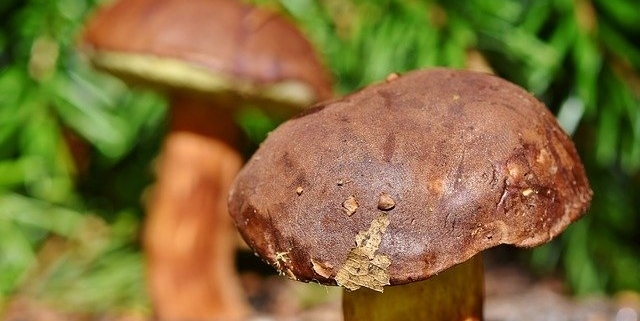Wet Weather Brings Out Mushrooms in Landscapes
Written by Carole Knight
Mushrooms are the visible structures of the unseen fungi growing in our landscapes. Think of mushrooms as the flowers and fruits of the fungi world. The mushrooms these fungi produce may cause a concern depending on where they are growing. Mushrooms and other fungal growths can be unsightly and are a concern since some may be toxic to children. They can be found growing in mulch, turf and landscape beds.
There are many types of mushrooms and other types of fungal growth including puffballs, stinkhorns and others. Slime molds, though not a fungus, can appear as a slimy, oily or powdery growth on lawns, mulches or wood.
Unfortunately, it is almost impossible to prevent mushrooms and similar organisms from growing. Many fungi get their energy from decomposing dead organic matter. They are actually a part of the natural recycling process. There are no chemicals that effectively kill all the fungi that cause mushrooms. You can remove the mushroom, but you must remove the fungus to keep the mushrooms from returning. To remove the fungus, you will need to remove the organic matter upon which it is growing.
There are several possible sources of food for fungi.
- Buried wood, roots or other organic matter. Dig up and remove the source.
- Thatch under lawns. De-thatching and aerating the lawn may reduce mushrooms.
- Mulch, especially mulch that is too thick. (Greater than 3 to 4 inches in depth).
- Piles of leaves, logs and limbs. Remove them if you need to discourage mushroom growth.
Even if you remove the food source, the mushrooms may still continue to grow. Removing the food should help to some extent. Mulches can be removed, properly composted and used again.
Some mulches are more prone to producing mushrooms and other fungal growth. Proper mulch selection, application and care can reduce mushroom problems.
- Bark chips from mature, old pine or cypress trees decay more slowly and are less prone to mushroom problems than chips from other types of trees. However, this is only true of chips from old, mature trees. Chips from young pine or cypress trees do not have this advantage.
- Wood or bark mulches from hardwood trees can be more prone to fungal problems than bark mulches from old pine or cypress trees. Composting these mulches before use will help reduce the chance of producing mushrooms.
- Mulches from bark or wood products should be composted for at least 6 months before being used as mulch. Add a nitrogen source to the mulch and keep the mulch moist and turned during composting
- Do not allow mulches to get dry. This leads to an increase in fungal activity. Then when the mulch gets wet again, mushrooms appear. Apply mulches 2 inches deep and wet the mulch well at application. Keep the mulch moist but not overly wet.
- Finer textured wood or bark mulches can be more prone to problems. Use coarser textured mulches and/or apply mulches in a thinner layer.
Mushrooms that grow at the base of trees (also called conks) are usually an indication that the interior of the tree is decaying. This can indicate that a tree is at risk to fall. If you see mushrooms (or conks) attached to tree limbs or roots, contact a certified arborist to evaluate the tree to see if has become a hazard.
Another fungal problem we see in mulch piles involves hydrophobic fungi. When mulch is applied too deeply or is piled up in areas, the mulch can be infested by these fungi that waterproof the mulch. Water will then no longer able to penetrate the mulch and the plant roots can dry out and die – even though the plants are being watered. This is especially a problem with woody mulches that are applied too deeply. Dig into affected mulches and you will notice that they are dusty dry. To prevent problems, do not apply these mulches more than 2 inches deep.
In addition, mulch piled against the base of trees can lead to tree damage and death. Pull mulches slightly away from the trunks of all trees and shrubs.
Once you begin seeing mushrooms, it may be best to just ignore or remove the mushrooms you can see and wait for the fungus to quit producing more mushrooms. This can take a while depending on the fungus, weather, etc. These fungal fruiting structures are often short-lived but interesting to watch. Try to ‘enjoy’ your landscape oddity until it runs its course.




